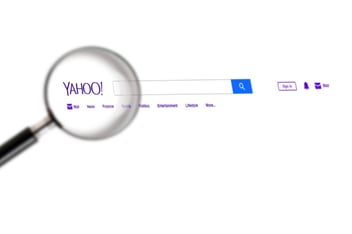How to Optimize Your Business for Local & Mobile Search
Offering accurate, up-to-date, and meaningful information to potential clients or customers when they are searching for it is one of the most meaningful (and profitable) things you can do for your business today.
Now, I didn’t say it was easy; managing your business's online presence is not a small task! Unfortunately, it is a vital part of your business's success. Sure, you may have a steady flow of loyal customers, but how do we ensure a constant stream of new faces comes through our doors?
Local SEO can help in this department, but if you aren’t sure how to properly fill out your local profiles, you could be wasting quite a bit of time and missing out on some serious revenue.
What Do I Need To Know Before Filling Out My Local Listings?
Every local listing site will have its own set of guidelines, but they will all be pretty similar. That being said, fill out every piece of information you possibly can and make sure it is the same on every listing. Bold that last sentence, underline it, burn it into your memory!
Having accurate and complete listings can help your search results and even drive more traffic to your site. It can also help you avoid some angry customers who happened to show up two hours before you were actually open because they saw incorrect information online.
What Information Do I Need To Include?
So, we know our listing has to be complete and accurate across all channels. Now what? Now is the time to fill in the blanks. Here is a quick list of the information you will need:
- Basic Business Information: Address, hours, phone number, website URL, etc. Always use your DBA (doing business as) name as it creates less confusion for customers and makes it easier for sites like Google to confirm your information is correct. Hours can be tricky for some businesses that have self-service, drive-up or access hours. Always use your office hours so customers know when someone will be there to speak with them directly. If access hours are a big draw for your industry, mention those in your business description.
- Email address: Make sure you use an email address that is associated with your domain (info@yourbusiness.com). A Gmail address (or even worse, Hotmail) just looks sketchy!
- Description: Make this short and sweet. Most listings have a character limit so you can’t exactly write a novel. You want to clearly communicate what you do without boring your potential customers all the way to a competitor’s listing.
- Business Category: These are pretty much determined for you; you just have to select the best one. Some sites allow you to choose multiple categories, some don’t. Make sure you pick the best fit for your business as the “Primary” category (if available), and leave the next best fit for your other categories. If you find yourself choosing more than three, you might want to re-think your decision. Again, think clear and concise.
- Payment Options: This one typically applies to B2C companies more so than B2B companies. Some sites let you tell your customers how you accept payment (bitcoin, credit/debit card, check, etc). This seems boring and antiquated, but we may see a big push about this soon. In fact, Apple’s Maps Connect now lets you tell customers whether or not you accept Apple Pay.
- Images: Tell me if this sounds familiar: You drive over to a new friend's house, park, and call them with a, “I think I’m here.” Maybe it’s a generational thing, but don’t you think you should do everything you can to make sure your customers know, without a doubt, that they are in the right place? Yes, you should probably have a big ole sign out front, but you’d be surprised how much a simple picture can impact a potential customer's comfort level. Always show off your storefront and maybe even give them a tour of the place.
Once you’ve filled out all of this information, it’s time to review your listing and submit it! It might be a good idea to keep a document with all of this information so you can simply copy and paste it on all of the listings you fill out.
You’ll also want to keep track of which listings you’ve completed and the login information for the site, if necessary. This will make it easier to remember how many sites you need to update listings on if anything changes (like operating hours).
Want to know more about local listings? Follow our Local Listings blog series!






